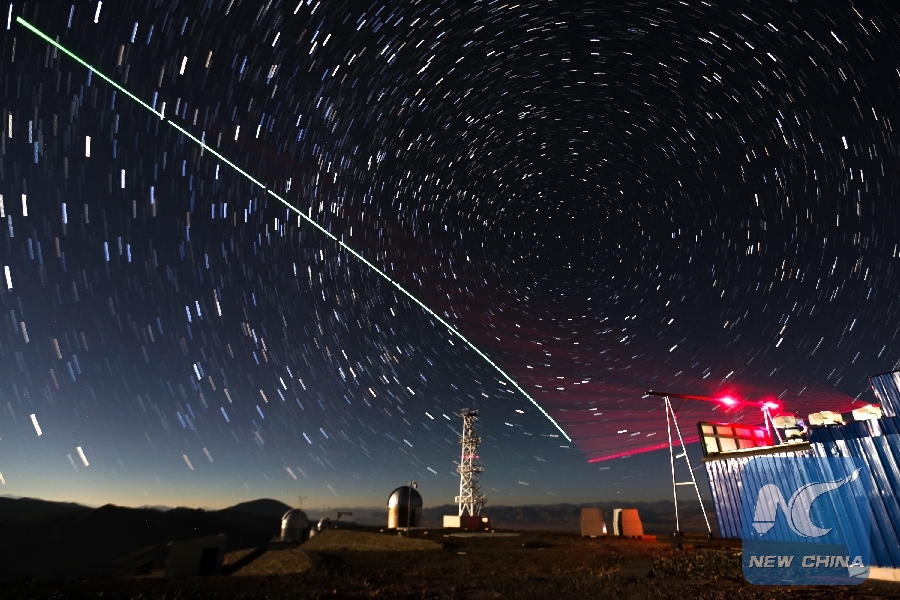 Composite photo taken on Dec 9, 2016 shows a satellite-to-earth link established between quantum satellite "Micius" and the quantum teleportation experiment platform in Ali, southwest China's Tibet Autonomous Region. Dubbed "Father of Quantum" by some in China, Pan Jianwei and his team harnessed quantum laws to transmit information securely, called quantum communications. [Photo/Xinhua]
Composite photo taken on Dec 9, 2016 shows a satellite-to-earth link established between quantum satellite "Micius" and the quantum teleportation experiment platform in Ali, southwest China's Tibet Autonomous Region. Dubbed "Father of Quantum" by some in China, Pan Jianwei and his team harnessed quantum laws to transmit information securely, called quantum communications. [Photo/Xinhua]WASHINGTON - A study on quantum communication made by Chinese scientists will receive the 2018 Newcomb Cleveland Prize as it laid the groundwork for ultra-secure communication networks of the future.
The American Association for the Advancement of Science (AAAS) announced Thursday that a team of 34 Chinese physicists led by Pan Jianwei with the University of Science and Technology of China had won the award that will be delivered on Feb. 14.
This is the first time that a Chinese team wins the prize with its home-grown research.
Pan and his Chinese colleagues used a satellite called Quantum Experiments at Space Scale (QUESS) or Micius to send entangled photon pairs through the near-vacuum of space, measuring the quantum keys at receiving stations over 1,200 kilometers apart.
Scientists found that when two entangled particles are separated, one particle can somehow affect the action of the far-off twin instantly, which is what Albert Einstein described as a "spooky action at a distance."
If researchers are able to maintain entanglement over long distances, an "hack-proof" messaging encryption system could evolve, according to Pan's study published in the journal Science in June of 2017.
The research shows that a network of satellites could one day form the infrastructure of a quantum internet.
"In principle, methods based on the phenomenon of quantum entanglement represent solutions to the problem of perfectly secure communication," said Jeremy Berg, editor-in-chief of Science and chair of the Newcomb Cleveland Prize Selection Committee.
"However, many challenges remain in converting these in principle methods into practice," said Berg. "The Newcomb Cleveland Prize winning paper presents a substantial step in addressing these challenges, demonstrating quantum communication over very long distances."
Previously, entanglement distribution had only been achieved at a distance up to 100 kilometers due to photon loss in optical fibers or terrestrial free space.
The Newcomb Cleveland Prize, AAAS' oldest award, has honored the most impactful research paper published in the journal Science since 1923.
http://www.ecns.cn/news/sci-tech/2019-02-01/detail-ifzeerre7965349.shtml